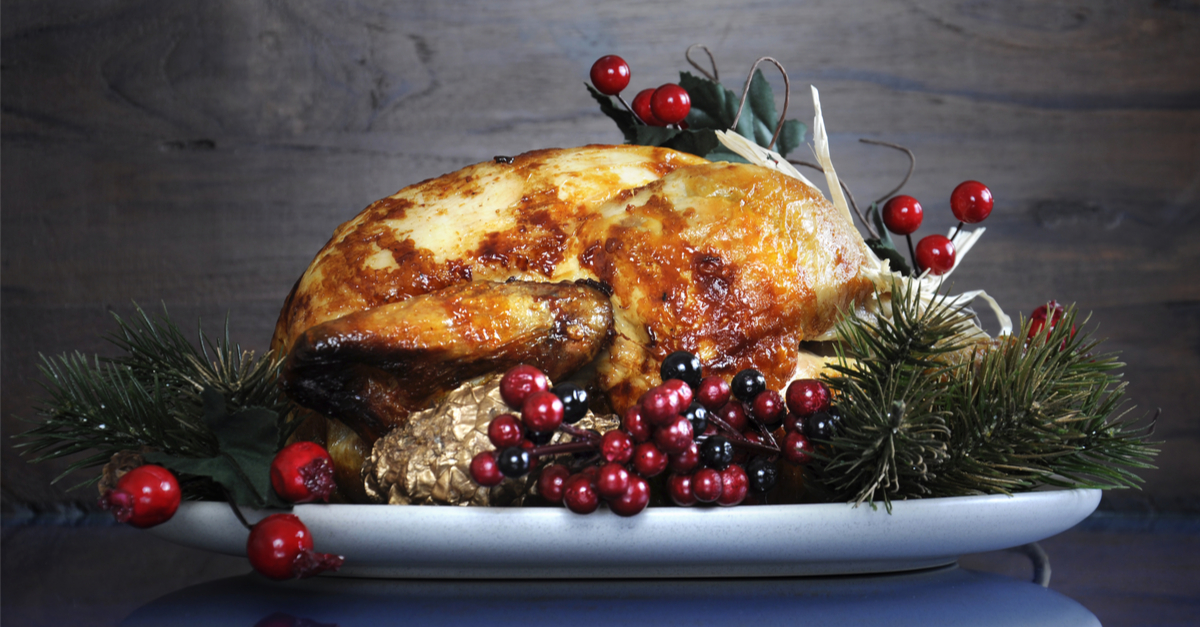The Struggle:
I know what you are thinking. Covering Turkey this early in the year? For that I apologize but this issue cannot wait. As we lurk closer and closer to the holiday season, we need to cover this. An oven roasted turducken is…. Well…. How do I put this nicely…. It’s trash. Over cooked turkey, on top of over cooked duck, on top of perfectly cooked chicken. As the turducken rests and the heat redistributes, that poor chicken doesn’t stand a chance. Now you have 3 over cooked birds, a group of hungry friends and family, and hopefully enough gravy for them to enjoy it once the novelty wears off. So if I had to make a turducken that was delicious and presentable how would I do it?
“How to make a good turducken?”
The End of Dry Turkey.
So as I fend off the Turducken purists with their pitchforks and torches I present to you this; a delicious, simple, and effective take on a turducken. Because I do like the idea of turducken, just not the execution. So here is why a turducken doesn’t work. First you are taking 3 lean cuts of meat and cooking them as one. So the exterior meat (generally turkey) will take the most prolonged heating. In execution the turkey will need to be heated through before the duck and lastly the chicken. So in testing the turkey will be heated to ~190°F before the chicken is cooked. Any temperature past 165°F is over cooking for white meat poultry. At 175-185°F the turkey will lose its moisture rapidly. This is because the higher the temperature the more the proteins denature. The proteins denaturing, causes them to constrict and purge their liquid. The “juice” in most meats are from rendered fats. But the “juice” in lean poultry cuts are mostly water. So the more water we sap from the meat the dryer it will become. The same with duck, duck does have more fat and connective tissue than turkey and chicken but a duck breast is still a lean cut of meat. And also think about if these are all cooked together with the skin on. Duck breast fat is a fantastic insulator, not to mention that no matter how well these are stuffed there will most likely be an air gap between the birds, leading to more insulation issues and longer cooking. Insulation’s issues cause more heat to penetrate the turkey before getting to the chicken. The chicken is the least of our worries because it is nestled inside of all these birds. As long as the chicken reaches 165°F for 15 seconds we are safe from salmonella! But in order to do this we’ve effectively ruined two other more expensive birds. And as the turducken rests for an hour or more the heat will continue to cook the chicken and boom, we have 3 over cooked birds.
Okay now that that’s out of the way, how do we make this better? The answer is just a little bit of culinary magic. First things first, don’t stuff all the birds into a big bundle. But instead break this down into four parts: two sets of breasts, two sets of legs. The breasts can be butterflied and sprinkled with salt and Transglutaminase RM. This will bind them together and allow them to cook, slice, and serve evenly with ease. The skins should be removed from the chicken and duck. But the fast can be rendered down and used to cook the final roulade. Roll the chicken into the duck and then the duck into the turkey. Wrap each roulade with the skin of the turkey that has also been dusted with Transglutaminase RM. Do this step with the rest of the breasts and legs. Wrap these in plastic wrap as tightly as possible and allow them to set overnight. Cooking the turducken sous vide is the best option. This allows you to cook the bird to the perfect temperature without overcooking it… ever. So what exactly is the perfect temperature. A temperature of 165°F is great for a classic poultry temperature. This works great for the roulades of legs But we find that 165°F is too high for duck breast. So we found a happy medium where all the lean cuts and tough cuts can shine. Cooking the meats at 140°F for 2 hours will yield the best texture for lean cuts. Now before anyone asks, we are aware 165°F for 15 seconds sterilizes salmonella. Chicken can be cooked to lower temperature for longer periods of time in order to sterilize chicken as well. The lowest time/temperature being 136°F for 63.6 minutes. So cooking a turducken at 140°F for 2 hours will give you perfectly cooked, salmonella free poultry that is tender and juicy. After 2 hours remove the breasts from the circulator bath and raise the temperature to 175°F and cook the legs for 45 more minutes. Fry the turduckens to create a crispy skin.
So as the holidays creep up on us every year. When that one family member who doesn’t cook a thing but always asks for turducken shows up. You can impress them with your new found culinary prowess. Also keep a close eye on our blog because something tells me you may see a turducken recipe within the next few weeks. Until next time, we will be here in the test kitchen, thinking of new ways to help you make your meals magical and memorable.


